
Composites Part C: Open Access
Scope & Guideline
Fostering Innovation in Composite Research
Introduction
Aims and Scopes
- Composite Material Development and Characterization:
Research focusing on the synthesis, processing, and characterization of new composite materials, including polymers, ceramics, and metals. This includes studies on mechanical, thermal, and electrical properties. - Sustainable and Biocomposite Materials:
Emphasis on developing environmentally friendly composites using natural fibers, biodegradable polymers, and recycling methods to promote sustainability in materials science. - Advanced Manufacturing Techniques:
Exploration of innovative manufacturing processes such as additive manufacturing, automated fiber placement, and other advanced techniques to improve the efficiency and performance of composite structures. - Modeling and Simulation:
Application of computational methods and modeling techniques to predict the behavior of composite materials under various loading conditions, including finite element analysis and machine learning approaches. - Mechanical Performance and Structural Applications:
Investigation of the mechanical performance of composites in structural applications, addressing issues like impact resistance, fatigue, and durability under different environmental conditions. - Interfacial Behavior and Damage Mechanisms:
Studies focusing on the interfacial properties between fibers and matrices, including damage mechanisms, failure analysis, and the effects of aging and environmental factors on composite performance.
Trending and Emerging
- Machine Learning and Data-Driven Approaches:
Increasing use of machine learning and data analytics in predicting material properties and optimizing composite designs, demonstrating a shift towards integrating artificial intelligence in materials science. - Recycling and Upcycling of Composite Materials:
A growing focus on the recycling of composite materials and the development of upcycled composites, reflecting the industry's shift towards sustainability and waste reduction. - Bio-Inspired and Nature-Based Composites:
Emerging interest in bio-inspired designs and the use of natural fibers and biopolymers in composite formulations, emphasizing sustainable practices and innovative applications. - Multi-Functional Composites:
Research into composites that serve multiple functions, such as structural integrity combined with thermal or electrical conductivity, showcasing the trend towards multifunctional materials. - Nanocomposites and Advanced Fillers:
Significant exploration of nanocomposites and the incorporation of advanced fillers like graphene and carbon nanotubes to enhance mechanical and thermal properties, indicating a trend towards high-performance materials.
Declining or Waning
- Traditional Composite Materials:
Research on conventional composite materials such as glass fiber reinforced plastics has decreased, likely due to the growing interest in more advanced materials and sustainable alternatives. - Simple Mechanical Testing Methods:
There has been a waning interest in basic mechanical testing methods without accompanying computational modeling or advanced analysis, as the field moves towards more sophisticated approaches. - Single-Material Focus Studies:
Research focusing solely on single-material systems without exploring hybrid composites or multi-material approaches is less frequently published, reflecting a trend towards more complex and integrated material systems. - Low-Impact Environmental Studies:
Studies that do not address sustainability or environmental impact have seen a decrease, as the journal increasingly prioritizes research that aligns with global sustainability goals.
Similar Journals

AIMS Materials Science
Empowering Research in Materials ScienceAIMS Materials Science is an esteemed open-access journal dedicated to advancing the field of materials science. Published by the American Institute of Mathematical Sciences (AIMS), this journal has been a vital resource for researchers, professionals, and students since its inception in 2014. With an ISSN of 2372-0468 and an E-ISSN of 2372-0484, it focuses on disseminating high-quality research in materials science, ranging from general materials science to cutting-edge advancements in innovative materials applications. Currently ranked Q3 in the 2023 Scopus Materials Science (miscellaneous) category, with a ranking of 253/463, AIMS Materials Science strives to provide an open forum for scholarly dialogue and collaboration, ensuring valuable insights are accessible to the global scientific community. The journal's commitment to open access enhances its visibility and reach, further promoting impactful research in this dynamic field.

Elastomers and Composites
Pioneering Research in Polymer EngineeringElastomers and Composites is a leading academic journal dedicated to the advancement of knowledge in the fields of polymer science and materials engineering, specifically focusing on elastomers and composite materials. Published by RUBBER SOC KOREA, this journal serves as a vital platform for researchers and professionals to disseminate innovative research findings and insights in material properties, applications, and synthesis techniques. Although it currently does not offer open access, the journal provides rigorous peer-reviewed content that enhances the global dialogue on elastomeric materials and their composites, reflecting its commitment to high-quality scholarship. With a strong emphasis on practical relevance and theoretical advancements, Elastomers and Composites aspires to reshape industry practices and academic thought, making it an invaluable resource for students, researchers, and practitioners alike. Positioned strategically within its field, this journal fosters collaboration and dialogue among scientific communities, all while supporting the growth of cutting-edge research programs worldwide.

ACTA METALLURGICA SINICA
Exploring the Depths of Material Science ExcellenceACTA METALLURGICA SINICA, established in 1978 and published by SCIENCE PRESS, stands as a preeminent journal in the fields of metallurgy and materials science. This journal is particularly revered for its contributions to Metals and Alloys, Mechanical Engineering, Geotechnical Engineering, and Mechanics of Materials, with a commendable Q1 ranking in Metals and Alloys and notable placements in other engineering disciplines. With a robust history of facilitating scholarly communication from 1978 to 1991 and consistently since 1996, the journal provides a vital platform for researchers and practitioners to disseminate significant advancements in material science. Despite being a subscription-based journal, ACTA METALLURGICA SINICA remains pivotal, holding a Scopus ranking that places it in the top tiers of its categories, fostering an environment ripe for innovation and collaboration. This ensures that the journal remains central to the ongoing discussions and developments within the metallurgy community, serving both academic and professional interests.
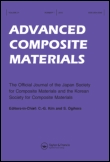
ADVANCED COMPOSITE MATERIALS
Shaping the Future of Mechanical Engineering with CompositesADVANCED COMPOSITE MATERIALS, published by Taylor & Francis Ltd, is a leading peer-reviewed journal in the field of materials science, specifically focusing on the innovative development and applications of composite materials. With an ISSN of 0924-3046 and E-ISSN 1568-5519, this journal serves as a vital resource for researchers and professionals worldwide, examining cutting-edge advancements and methodologies in composites, ceramics, and mechanical engineering. Having secured a solid standing in the academic community, it boasts impressive Scopus rankings, such as #185 in Mechanical Engineering with a 72nd percentile and #46 in Ceramics and Composites, emphasizing its relevance and rigor. Although not an open-access publication, its insights are invaluable for those looking to explore, contribute to, and stay abreast of the latest breakthroughs in the field from 1991 through 2024. By targeting critical areas within mechanics and material sciences, the journal continues to foster innovation and scholarly discussion, making it an essential venue for specialists striving to advance the capabilities and applications of composite materials.
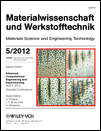
MATERIALWISSENSCHAFT UND WERKSTOFFTECHNIK
Advancing Knowledge in Material Engineering.MATERIALWISSENSCHAFT UND WERKSTOFFTECHNIK, published by WILEY-V C H VERLAG GMBH, is a prominent journal dedicated to the field of materials science and engineering. With its ISSN 0933-5137 and E-ISSN 1521-4052, this journal serves as a vital resource for researchers and professionals engaged in exploring the intricate relationships between the properties of materials and their applications. Established in 1970 and continuing through 2024, the journal has been consistently recognized in various categories, achieving a Q3 ranking in 2023 across Condensed Matter Physics, Materials Science (miscellaneous), Mechanical Engineering, and Mechanics of Materials. Although it does not offer open access, its high-quality peer-reviewed content is fundamental to the advancement of knowledge within its three key areas: novel material development, material characterization, and application of materials in engineering contexts. As a driving force in the scientific community, MATERIALWISSENSCHAFT UND WERKSTOFFTECHNIK continues to cater to the curiosity of aspiring students, seasoned professionals, and researchers alike, facilitating a deeper understanding of the complexities of material technology.

POLYMERS & POLYMER COMPOSITES
Pioneering Insights in Polymer ApplicationsPOLYMERS & POLYMER COMPOSITES, published by SAGE Publications Ltd, is a prestigious journal dedicated to the exploration of significant advancements in the diverse fields of polymers, composite materials, and their innovative applications. With an ISSN of 0967-3911 and E-ISSN of 1478-2391, this journal plays a crucial role in the academic community, boasting an impressive ranking in the Q2 quartile across pivotal categories such as Ceramics and Composites, Materials Chemistry, and Polymers and Plastics in 2023. Positioned in the United Kingdom, it serves as a vital resource for researchers and professionals, providing insights into current trends and future directions in material science. Despite its availability not extending to Open Access, the journal aims to promote rigorous peer-reviewed research, thus fostering knowledge and collaboration among scholars. With publication convergence from 1993 to 2024, POLYMERS & POLYMER COMPOSITES stands as a cornerstone for those pursuing advanced understanding and excellence in material innovation.
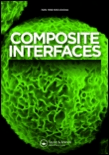
COMPOSITE INTERFACES
Pioneering Research in Composites and CeramicsComposite Interfaces is a prominent journal dedicated to advancing the scientific understanding and applications of composite materials and interfaces, published by Taylor & Francis Ltd. Since its inception in 1993, this journal has become a pivotal resource for researchers and practitioners in the fields of ceramics and composites, as well as in physics and materials sciences. With a commendable Q2 ranking in 2023 across multiple categories, including Ceramics and Composites, Physics and Astronomy, and Surfaces, Coatings and Films, Composite Interfaces ensures a high standard of scholarly excellence, reflected in its robust Scopus rankings. While the journal operates under a subscription model, its influential body of work is vital for those seeking to innovate in composite material applications. By fostering scholarly communication, Composite Interfaces plays a crucial role in the progression of material science, an area of increasing relevance in technology and engineering.

Composites-Mechanics Computations Applications
Advancing the frontiers of composite materials and mechanics.Composites-Mechanics Computations Applications is a pioneering journal published by BEGELL HOUSE INC, dedicated to advancing the field of composite materials and mechanics. With an ISSN of 2152-2057 and an E-ISSN of 2152-2073, this journal serves as a vital resource for researchers, professionals, and students seeking to explore the latest advancements in composite materials, computational mechanics, and their applications across various industries. Although it currently resides in the Q4 category for both ceramics and composites, as well as mechanics of materials, it provides a platform for quality research that highlights emerging trends and innovations. The journal, operational from 2010 to 2024, encourages submissions that cover theoretical, experimental, and computational methodologies, aiming to bridge the gap between practical applications and theoretical advancements. While the journal does not offer open access, it remains an important source for insightful studies that contribute to the evolving disciplines of materials science and engineering.
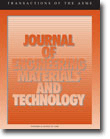
JOURNAL OF ENGINEERING MATERIALS AND TECHNOLOGY-TRANSACTIONS OF THE ASME
Connecting researchers and practitioners in the realm of engineering innovation.JOURNAL OF ENGINEERING MATERIALS AND TECHNOLOGY-TRANSACTIONS OF THE ASME is a premier journal published by the American Society of Mechanical Engineers (ASME), dedicated to advancing the field of engineering materials and technology. With an ISSN of 0094-4289 and E-ISSN 1528-8889, this journal has provided invaluable insights since its inception in 1973. Operating from its headquarters in New York, United States, it serves a global audience of researchers, professionals, and students alike. The journal is recognized for its rigorous peer-review process and its commitment to disseminating high-quality research, currently holding a Q3 quartile ranking across multiple categories including Condensed Matter Physics, Materials Science, Mechanical Engineering, and Mechanics of Materials. With a focus on exploring innovative materials and their applications, it aims to foster collaboration and discovery in the engineering community. Although it is not an open-access journal, it continues to play a vital role in shaping the future of engineering materials research up to 2024. Researchers and practitioners will find in this journal a significant platform to support the development and understanding of engineering materials, making contributions that resonate through academia and industry.
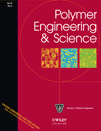
POLYMER ENGINEERING AND SCIENCE
Transforming Ideas into Polymer SolutionsPOLYMER ENGINEERING AND SCIENCE, published by WILEY, is a premier journal specializing in the field of polymer science and engineering. Since its inception in 1961, this journal has been at the forefront of disseminating high-quality research, focusing on various aspects of polymers and plastics, including their chemistry, properties, and applications. With an impressive impact factor, it ranks in the second quartile (Q2) across multiple categories, including Chemistry (Miscellaneous), Materials Chemistry, and Polymers and Plastics, showcasing the journal's significance and influence in these vital areas of research. Researchers and professionals in academia and industry will find the latest advancements and innovative methodologies in polymer science, making this journal an essential resource for those looking to stay updated on cutting-edge developments. While it does not currently support Open Access, its comprehensive scope and critical insights positioned it as a valuable platform for advancing knowledge and fostering collaboration within the polymer community. The journal’s office is located at 111 River St, Hoboken 07030-5774, NJ, United States, emphasizing its strong presence in the academic landscape.